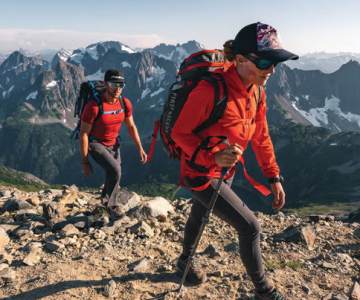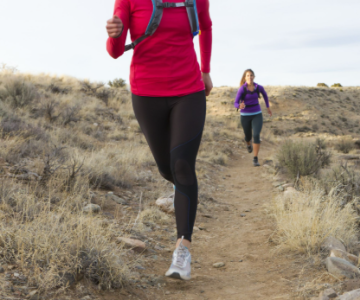When it comes to running gear, one of the most essential yet often overlooked items is the right pair of pants. Whether you’re hitting the trail or the track, choosing the appropriate bottoms can make all the difference in comfort, performance, and even injury prevention. With options like shorts, tights, and leggings, plus decisions about liners and underwear, it can be a bit overwhelming. In this guide, we’ll break down the best pants for running, addressing common questions and helping you make the right choice for your needs.
Running Shorts: A Warm-Weather Essential
For many runners, especially in warm weather, shorts are the go-to choice. They offer excellent ventilation and freedom of movement, which are crucial for comfortable and efficient running. But what should you look for when choosing a pair of running shorts?
With or Without Underwear?
Most running shorts come with built-in liners, which are designed to manage moisture and improve ventilation. These liners help prevent chafing and provide support, so wearing underwear underneath isn’t necessary (and can actually cause discomfort). However, some shorts don’t include liners, and in this case, runners often choose to wear compression shorts or tights underneath for added support and comfort.
V-Notch vs. Split Leg Shorts
Running shorts typically come in two styles: V-notch and split leg. V-notch shorts have an inverted V-shaped cut at the leg hems, which enhances range of motion. On the other hand, split leg shorts feature a small gap in the leg seam, allowing for even more movement. These are particularly beneficial for runners who need extra mobility on rugged trails. V-notch shorts are favored by trail runners for their freedom of movement, while split leg styles are more performance-focused.
Length and Fit
Shorts come in various lengths, with inseams typically ranging from 1” to 7”. The length you choose depends on personal preference and your need for ventilation. Shorter shorts provide more airflow, while longer shorts can offer more coverage and help prevent chafing, especially if your thighs rub together. Ultimately, it’s all about comfort and what feels best for you.
Material and Fabric
Look for running shorts made of breathable, moisture-wicking materials like polyester, nylon, or a polyester-spandex blend. These fabrics dry quickly and allow for better air circulation. Avoid cotton, as it traps moisture and can cause chafing. Additionally, consider fabrics with antimicrobial properties to help keep odors at bay, especially if you run in hot, sweaty conditions.
Running Tights: A Cold-Weather Favorite
When the temperatures drop, a good pair of running tights is essential. They provide warmth, support, and comfort while you’re out on the trails or road.
Tights vs. Leggings
While both tights and leggings are made from stretchy fabrics, the key difference lies in their fit. Tights are designed to fit snugly and offer compression to improve muscle support and reduce fatigue. Leggings, in contrast, are more relaxed and are typically made for everyday wear. For running, tights are the preferred choice, as they offer better performance and muscle support.
Compression Benefits
Compression tights have gained popularity due to claims they can improve blood circulation and reduce muscle oscillation during impact. While the effect on performance is still debated, research suggests that compression gear can help reduce muscle soreness post-run, making it a great option for recovery. However, if you’re looking for performance benefits during the run itself, don’t expect dramatic results.
Finding the Right Fit
The key to a comfortable and effective pair of running tights is a good fit. Tights should feel like a second skin—tight but not restrictive. Always try on tights before purchasing to ensure they’re the right fit for your body type. If buying online, be sure to check return policies in case they don’t fit as expected.
Length and Fabric Choices
Running tights come in various lengths: full-length, 7/8 length, capris, and even shorts. Choose the length based on the weather conditions and how much coverage you need. Full-length tights are great for cold weather, while capris and 7/8 length tights are perfect for warmer climates. The material should be breathable and moisture-wicking, just like running shorts. In colder conditions, tights with added warmth, such as merino wool, can be a good option.
Seams and Transparency
One key feature to look for in running tights is low-profile seams, which reduce the risk of chafing. When buying tights, make sure they’re opaque, especially in bright light or when running. The last thing you want is to be self-conscious while running, so always check the opacity before making a purchase.
Combining Shorts and Tights
For those who feel uncomfortable wearing tights on their own, pairing tights with shorts is a popular solution. This combination provides the warmth and muscle support of tights, with the breathability and mobility of running shorts. If you opt for this look, choose tights without built-in liners to maximize comfort and avoid extra layers.
Optional Features: Pockets and Visibility
While not essential, certain features can make your running pants even more functional.
Pockets
Many running shorts and tights come with built-in pockets to store small items like keys, energy gels, or a phone. The most useful pockets are small zippered ones sewn into the waistband, but some shorts designed for trail running offer larger pockets for more storage. If you’re not using a hydration pack, these pockets are invaluable for carrying your essentials.
High Visibility
If you run during low-light conditions, reflective strips or brightly colored fabric can help increase your visibility. Reflective elements are especially important on dark-colored shorts or tights, which can be hard to spot in the dark. Look for running pants with built-in reflective detailing to stay safe during your nighttime or early morning runs.
Conclusion
Choosing the right pants for running is all about comfort, functionality, and weather conditions. Whether you prefer the breathability of shorts or the warmth and support of tights, there’s a perfect pair for every runner. Keep in mind the fit, fabric, and optional features to find the best gear for your needs, and remember, comfort is key when it comes to long runs.





